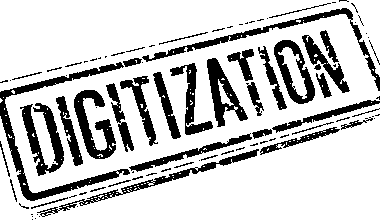Integrating Social Media into Your Overall Crisis Management Plan
In an increasingly digital world, the role of social media in crisis management cannot be underestimated. Today, organizations must view these platforms as integral to their overall crisis response strategy. Social media allows for instant communication, enabling companies to disseminate important information quickly. It also serves as a channel for gathering public sentiment and concerns during crises. This dual functionality can enhance situational awareness and facilitate more effective decision-making during emergencies by allowing organizations to gauge the public response. Moreover, incorporating social media into your crisis management plan enhances transparency and trust. Responding promptly to queries and acknowledging public concerns creates a sense of reliability. Organizations that effectively integrate these platforms into their plans can mitigate negative damage and control the narrative. Additionally, having a dedicated social media team to monitor channels during crises can help identify misinformation. Crisis communicators should establish guidelines for social media interactions that align with overall communication objectives. Most importantly, regular training exercises that include social media scenarios will prepare your team to react effectively when a real crisis occurs. Integrating social media within your crisis management plan is not just an option; it’s vital.
These days, crisis management without social media isn’t feasible for organizations aiming for a holistic approach. It’s critical to understand that social media serves as the first touchpoint for many stakeholders during a crisis. For this reason, crafting a clear messaging strategy tailored for these platforms is essential. All social media messages should be concise, transparent, and offer actionable steps for the public. By minimizing ambiguity, organizations can reduce the panic surrounding any situation. Detailed planning should identify key personnel responsible for crafting and publishing messages during a crisis. Additionally, establish which platforms will be utilized, depending on where your audience is most active. For instance, Twitter’s real-time nature is suitable for breaking news updates, while Facebook can serve as an avenue for longer updates and community engagement. Furthermore, aligning your social media strategy with traditional methods enhances overall effectiveness. Information should consistently flow across multiple platforms, maintaining a unified voice. Doing so can prevent confusion and miscommunication. Establish a feedback loop where input from social media interactions can inform ongoing strategy adjustments, ensuring that messages are tailored to evolving situations and audience concerns.
Utilizing Analytics for Improvement
Measurement tools on social media platforms can significantly enhance your crisis management efforts. Leveraging analytics during and after a crisis can offer insights into the effectiveness of your communication strategy. Understanding what messages resonate with your audience can help fine-tune future communications. For example, analyzing engagement metrics such as likes, shares, and comments reveals public sentiment. Identifying post-performance enables organizations to refine their messaging approach in real time. Periodic audits of social media interactions can also pinpoint recurring queries, allowing companies to prepare responses ahead of similar situations in the future. Learning from past crises is vital for shaping the future of your social media strategy. Gathering comprehensive data will not only illuminate areas of success but also highlight weaknesses that require more attention and resource allocation. Capitalizing on positive interactions reinforces brand loyalty, while directly addressing negative interactions fosters a sense of community. Ultimately, utilizing analytics transforms your crisis management plan from reactionary to proactive by anticipating public needs and concerns. Making informed decisions based on analytics leads to timely and relevant strategies that can mitigate crisis impacts and enhance overall organizational reputation.
One essential aspect of effective social media management during crises is having a clear set of protocols. These protocols should provide guidelines for social media team members on how to respond to various scenarios. Establishing a predefined crisis response plan will keep the messaging consistent and help avoid confusion. It’s crucial to designate spokespersons to ensure that all communication is credible, professional, and aligns with organizational objectives. This prevents misinformation from seeping into your crisis communications. Professionalism should also extend to tone and language used across platforms. Adapting communication style based on the audience fosters a sense of connection and understanding. Subsequently, organizations should encourage team collaboration across departments. Integrating insights from public relations, legal, and operational teams empowers your social media strategy with various perspectives. Team members must practice in real-life scenarios, simulating crises to evaluate the effectiveness of your protocols. Regular training will ensure everyone understands their roles and responsibilities. Furthermore, revisiting and refining crisis protocols consistently will build resilience. A well-structured crisis management plan using social media not only handles the current issue but also prepares the organization for future challenges effectively.
Engaging the Audience
Actively engaging your audience on social media during a crisis is crucial for maintaining positive relationships. Organizations must be prepared to not just respond to comments and inquiries but also initiate conversations. Proactive engagement can alleviate concerns and demonstrate a commitment to transparency. Share accurate updates on the situation, highlighting any steps being taken to address the crisis. Utilizing visual content, such as infographics and videos, enhances the appeal of your messages, making them easier to digest. Furthermore, engaging with audience concerns should extend to addressing misinformation. Communicate directly with users who share incorrect information, providing them with accurate data. This fosters trust and positions your organization as a reliable source. Moreover, creating a designated hashtag related to the crisis allows you to streamline information and monitor discussions effectively. Follow this up by showcasing testimonials or stories from stakeholders who positively experience your organization during troubling times. Receiving feedback on social media allows companies to adjust their approaches promptly, showing customers that their feedback is valued. Implementing engagement strategies during crises ensures that the audience continues to feel connected and informed while nurturing long-term brand loyalty.
The importance of preparing a crisis communication toolkit cannot be overstated. This toolkit should include predetermined templates and responses for various crisis scenarios specific to your organization. By having these materials ready, your social media team can react quickly. Customizable templates ensure timely and relevant communication that resonates with stakeholders. Furthermore, it’s important to gather resources that aid in accurate reporting. Contact information for external agencies and stakeholders is essential for streamlining communication. The toolkit should also contain guidelines on sensitive topics to ensure respectful handling while addressing crises. Additionally, incorporating alert systems can help notify team members of an emerging crisis and outline roles quickly. Operationalizing these strategies will enable organizations to act swiftly and efficiently when faced with a crisis. Each toolkit component should be reviewed regularly, factoring in lessons learned from previous incidents. Asking for team feedback helps to refine the content further. Ultimately, equipping your social media management teams with a well-crafted crisis communication toolkit significantly enhances their confidence and ability to respond effectively, thus minimizing the long-term negative impacts of a crisis and improving overall response times.
Conclusion: Continuous Improvement
Social media management must evolve as part of a comprehensive crisis management plan. After addressing a crisis, organizations should conduct a thorough analysis to understand what worked well and what needs improvement. Gathering feedback from all involved parties, including social media teams, leadership, and external stakeholders, provides valuable insights. Identify engagement metrics to determine successful messaging strategies. Such analysis should focus on audience response to refine future communications. Moreover, evaluating public perceptions post-crisis is essential to repair any damage caused. This introspective process will illuminate the strengths and weaknesses of your overall social media strategy during crises. Based on these insights, organizations can update toolkits, protocols, and training methods. Embracing continuous improvement fosters an organizational culture that prioritizes preparedness. Remember, a well-structured crisis management plan utilizing social media will not only enhance response but also solidify public trust. Collaboration, thorough preparation, and responsiveness will serve as cornerstones for effective crisis management. As organizations plan for potential crises now, integrating social media remains crucial. The landscape is always changing, and being proactive today ensures your organization can effectively manage future challenges, aligning with an audience that demands transparency and engagement.
In this regard, it is crucial to have strong support for your social media strategies, especially from top leadership. Their commitment to integrating these practices ensures the necessary resources are allocated adequately. Additionally, they set the tone for a culture of transparency throughout the organization. Continued investment in social media training for staff also demonstrates a long-term dedication to effective crisis management. Investing in technology tools to improve monitoring and analytics can provide a competitive edge. By prioritizing social media within crisis management, organizations can build resilience, reduce risks, and enhance their overall reputation. Therefore, as crises evolve, so must the strategies employed by organizations to respond to them. Adopting a flexible and adaptive approach will improve long-term outcomes and resilience in a community, especially during turbulent times. The overall goal should be to prioritize quick, consistent, and constructive communication to improve stakeholder relationships. In summary, integrating social media effectively not only addresses current crises but also prepares organizations for future challenges. A comprehensive strategy will lead to better engagement, trust, and positive long-term relationships with your audience. This integrated approach helps organizations become well-equipped for an ever-evolving media landscape.


